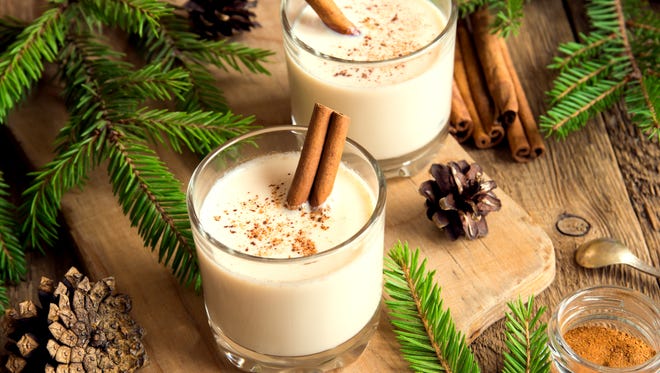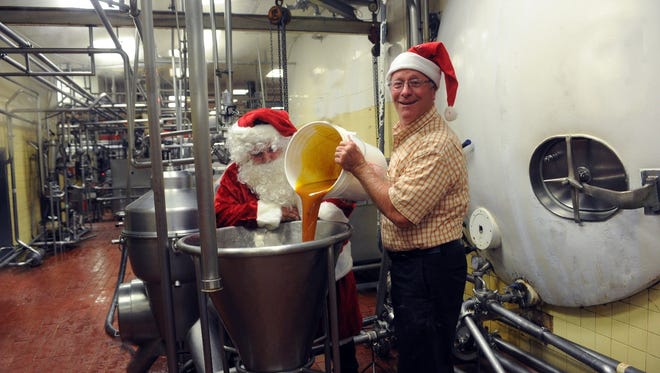Eggnog: How a drink for the rich became an American winter staple

Eggnog has probably been around in one form or another for a thousand years, but it didn’t really hit its stride until American colonists adopted it as a drink.
In fact, it probably is a more American drink than people realize. Cultures all around the world drink some variation of cream, eggs, spices and booze. It is a primally appealing combination, heavy, nutritious and a fortification against the cold.
The western European version likely started off as something called posset, curdled milk flavored with wine or beer from at least the 12th century. In the run-up to the Colonial era, eggnog was a drink of the rich and the emerging middle class. In a time when harvest festivals really were a last hurrah before a long, possibly lean, winter, eggnog was the go-to drink in a holiday toast to continued prosperity.
Since fresh milk and eggs were more expensive than whatever alcohol was added, eggnog was a special occasion drink even among the rich.
The American colonists adapted eggnog as a kind of everyman holiday drink from the start because of the comparative bounty to which most had access. Milk in early America was not hard to come by any more than were eggs and spices.
The ingredients were pretty plentiful given that most Americans were either farmers or traders. The sugar and rum trades were brisk and American whiskey, both rye and later bourbon, were cheap and easily available.
Many farms had their own brewing and distilling apparatus for turning rye and barley into alcohol. Whiskey was as good as cash during the American Revolution, and it was used as an alternative to beer and given to slaves and servants as a water alternative.
More:Russo: Fall is brown beer season; here's why that's a good thing
When it came to eggnog, the rise of American whiskey and particularly of bourbon changed not only the nature of the drink, but what people expected it to taste like.
Nutmeg, cinnamon and cloves were considered warming spices and used in many Colonial era drinks. Even the nonalcoholic egg and cream concoction can have something of a sweet, almost boozy taste.
George Washington’s recipe is still around. And while it contains rum, sherry and whiskey, the most important part of the recipe is “taste often,” and it isn’t just for the booze.
The common denominator that connects eggnog through the centuries is the addition of fresh, quality eggs and cream. This is all the more critical for those who make it in the traditional way, using raw, unpasteurized eggs. Most recipes call for an addition of about 40 percent alcohol to keep salmonella from developing. Nothing bad can live in alcohol, but it can take a week or more for the cream and eggs to take the bite out of that much booze.

How important an ingredient liquor is, though, might just be a matter of taste. Lewes Dairy’s Chip Brittingham has been making one of the most popular eggnogs in the region for years and he has very little patience for the addition of alcohol.
“Alcohol ruins it,” he said. “I drink it just the way it is.”
More:Hughes: Mock me for listening to Christmas music early all you want
Although he inherited rather than invented the recipe, Brittingham has personally made the Lewes Dairy eggnog for more than 50 years.
By mid-November he begins making regular trips to the Wilmington production plant to make certain the mixture is right. At the heart of the drink is attention to the mixing process and the taste. Tasting eggnog as it is compiled is everything.
Washington likely tasted it to make sure the alcohol was mellowing enough that the drink would be palatable. Brittingham tastes it throughout the process to make certain the eggnog his customers remember is the eggnog his customers get.
He will do this weekly for the rest of the year, then shut down production until the next November, when it is time to celebrate before gearing up for the long cold winter.